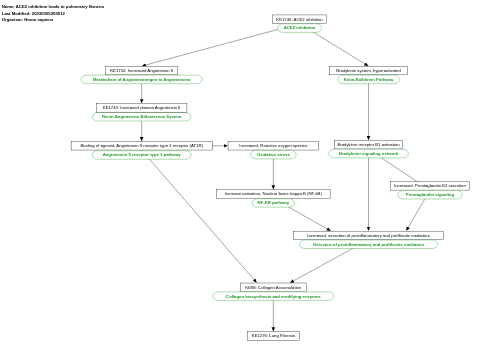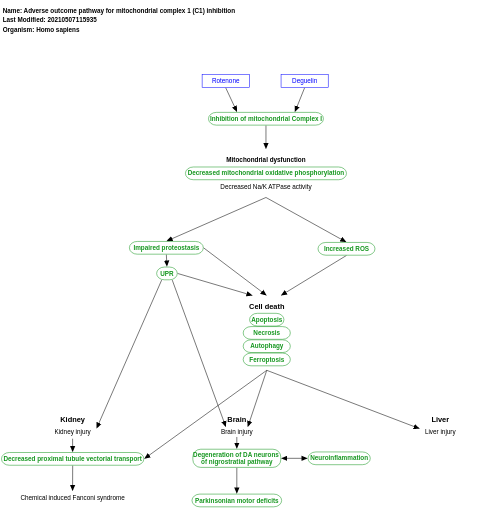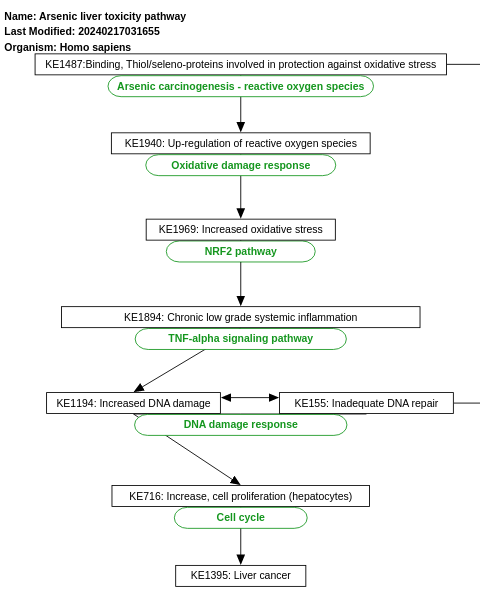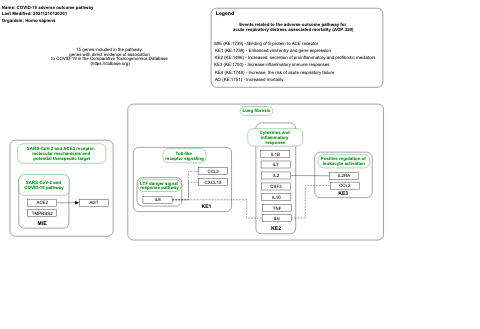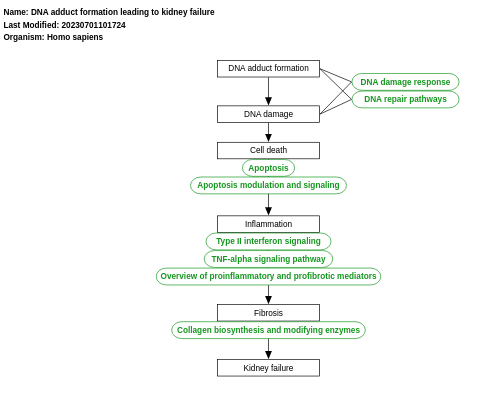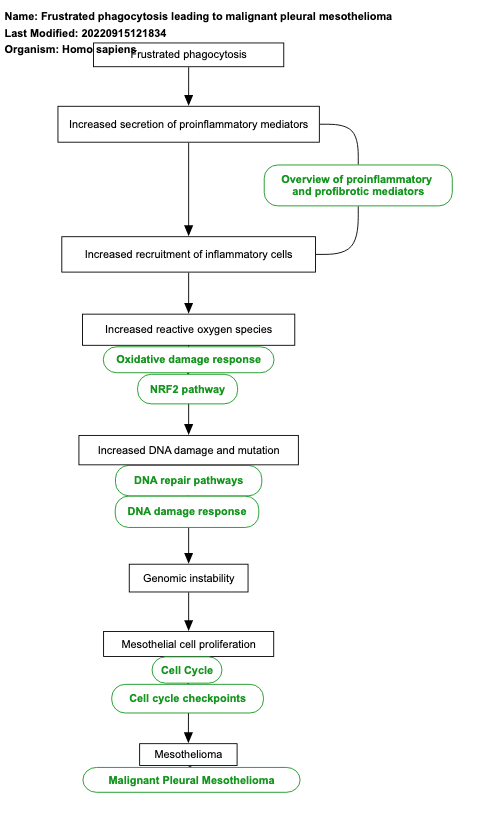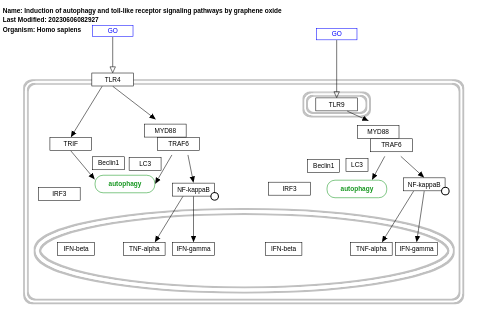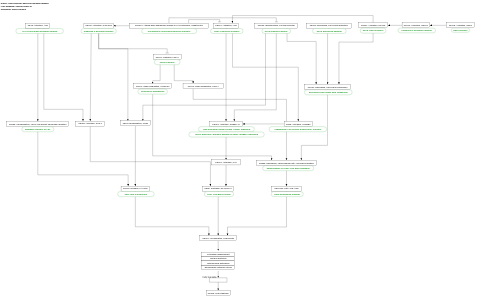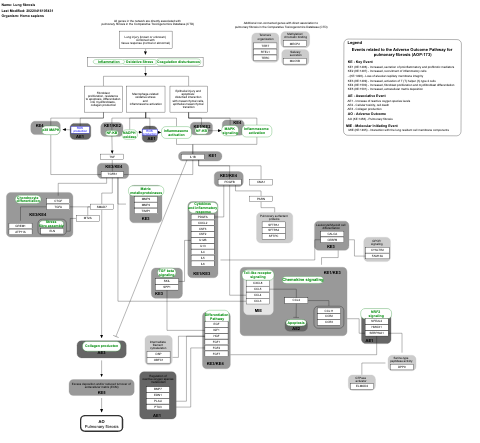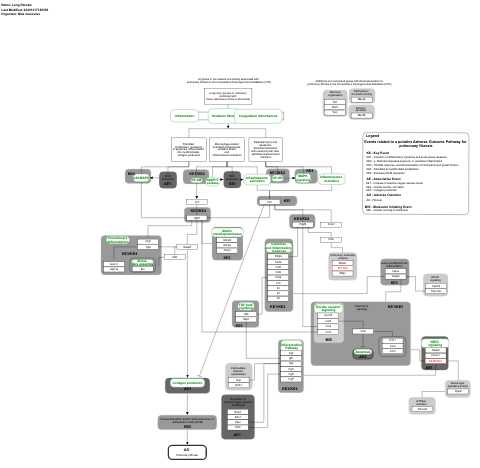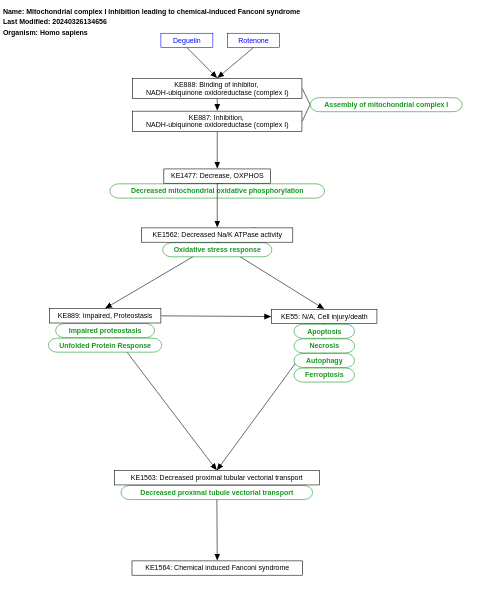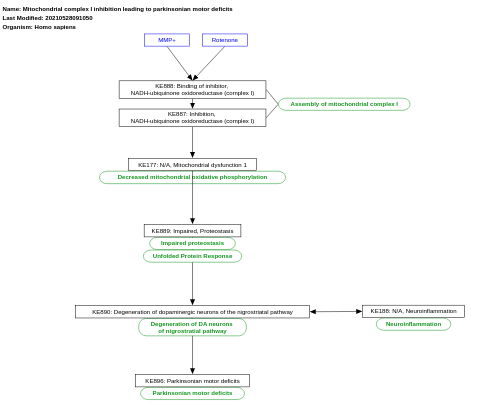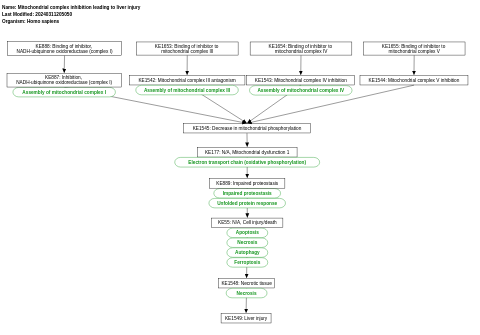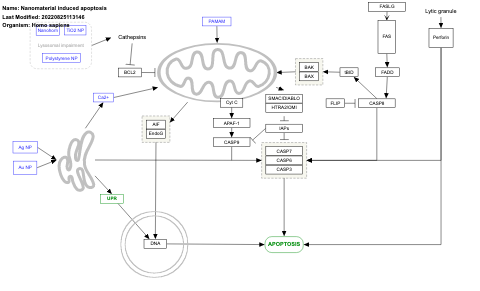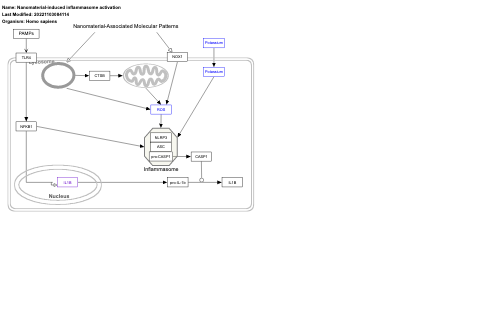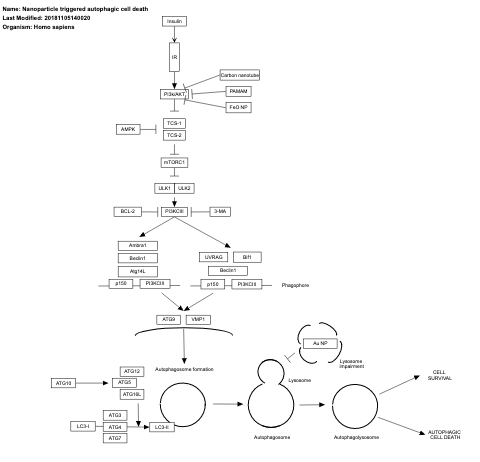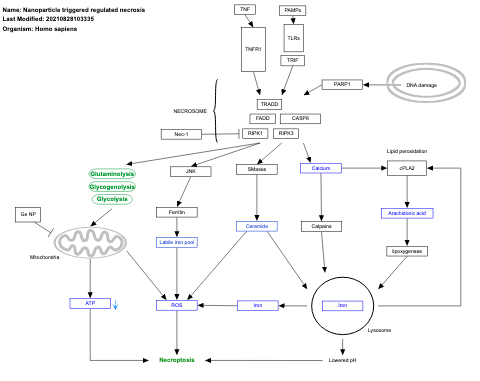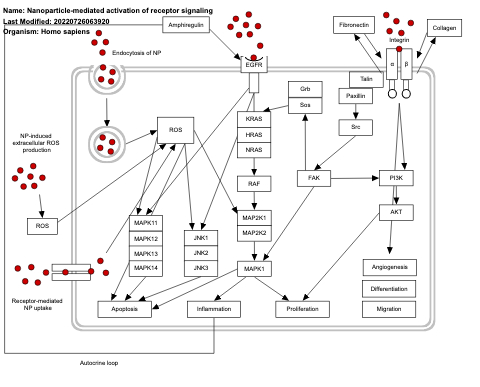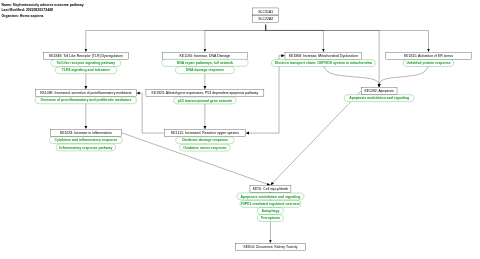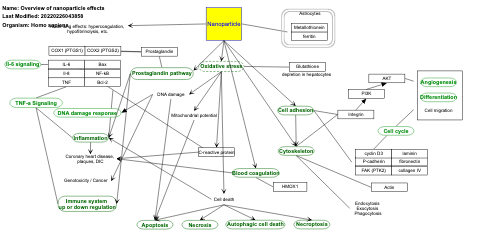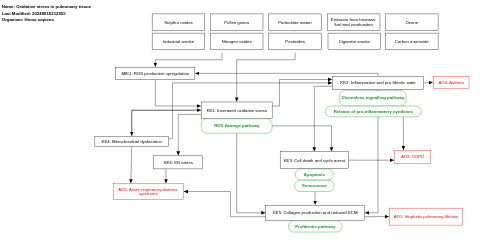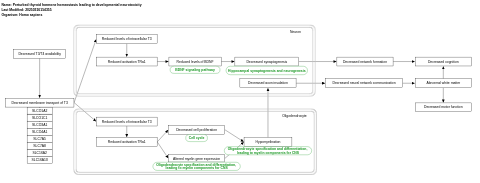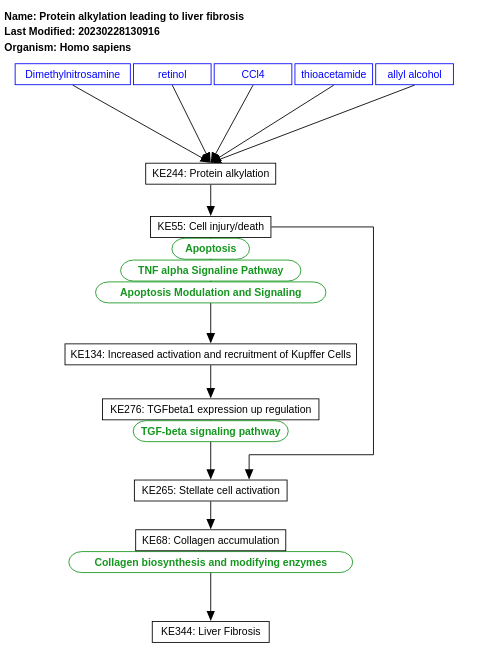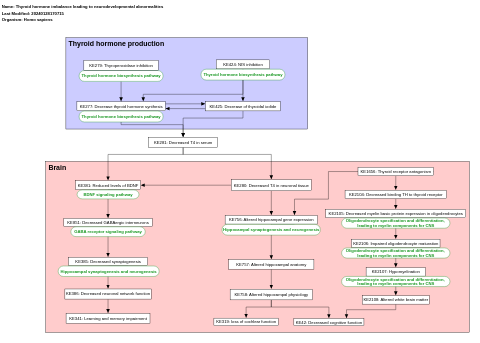The Adverse Outcome Pathway (AOP) Pathways
This Adverse Outcome Pathway (AOP) Community is created to highlight the molecular basis of AOPs, or events in, AOPS. In general, AOPs start with a Molecular Initiating Event (MIE) caused by a stressor, followed by Key Events (KEs), that lead to an Adverse Outcome (AO). These AOPs are intended specifically for regulatory decision making and are typically stored in the AOP Knowledge Base (AOPKB). Because AOPs are simplified explanations of biological effects after the effect of a stressor they are not useful to describe and understand the molecular basis of the AOPs and not suited to do data analysis. Such analysis is needed especially for in silico risk analysis intending to lower animal use in toxicology studies. This community page was created to present this previously missing molecular level of the AOPs and get more into detail on the biological processes involved in them. The development of these molecular AOPs is relevant for the European research projects on toxicology EU-ToxRisk, OpenRiskNet and VHP4Safety that also funded part of the work. This community page is also featured in the latest NAR Database Issue on WikiPathways.
Contact
Friederike Ehrhart , Marvin Martens , and Penny Nymark .
Community Pathways
Table FiltersThis community helps to curate 24 pathways:
- ACE2 inhibition leads to pulmonary fibrosis - WP5035 (Homo sapiens)
- Adverse outcome pathway for mitochondrial complex 1 (C1) inhibition - WP4914 (Homo sapiens)
- Arsenic liver toxicity pathway - WP5228 (Homo sapiens)
- COVID-19 adverse outcome pathway - WP4891 (Homo sapiens)
- DNA adduct formation leading to kidney failure - WP5389 (Homo sapiens)
- Frustrated phagocytosis leading to malignant pleural mesothelioma - WP5091 (Homo sapiens)
- Induction of autophagy and toll-like receptor signaling by graphene oxide - WP5336 (Homo sapiens)
- Liver steatosis adverse outcome pathway - WP4010 (Homo sapiens)
- Lung fibrosis - WP3624 (Homo sapiens)
- Lung fibrosis - WP3632 (Mus musculus)
- Mitochondrial complex I inhibition leading to chemical-induced Fanconi syndrome - WP4944 (Homo sapiens)
- Mitochondrial complex I inhibition leading to parkinsonian motor deficits - WP4945 (Homo sapiens)
- Mitochondrial complex inhibition leading to liver injury - WP5034 (Homo sapiens)
- Nanomaterial induced apoptosis - WP2507 (Homo sapiens)
- Nanomaterial-induced inflammasome activation - WP3890 (Homo sapiens)
- Nanoparticle triggered autophagic cell death - WP2509 (Homo sapiens)
- Nanoparticle triggered regulated necrosis - WP2513 (Homo sapiens)
- Nanoparticle-mediated activation of receptor signaling - WP2643 (Homo sapiens)
- Nephrotoxcicity adverse outcome pathway - WP5229 (Homo sapiens)
- Overview of nanoparticle effects - WP3287 (Homo sapiens)
- Oxidative stress in pulmonary tissue - WP5482 (Homo sapiens)
- Perturbed thyroid hormone homeostasis leading to developmental neurotoxicity - WP5517 (Homo sapiens)
- Protein alkylation leading to liver fibrosis - WP3980 (Homo sapiens)
- Thyroid hormone imbalance leading to neurodevelopmental abnormalities - WP5227 (Homo sapiens)
Reference
How to Contribute
The list of pathways is not static and can be updated at any time. If you know of a pathway that should be added, please contact the administrator, Marvin Martens (marvin.martens[AT]maastrichtuniversity.nl).
To start a discussion about topics relevant to this community, or to browse existing discussions, visit WikiPathways Discussions.
Support
This project has received funding from the European Union’s Horizon 2020 research and innovation programme project EU-ToxRisk under grant agreement No. 681002, EINFRA-22-2016 programme project OpenRiskNet under grant agreement No. 731075 and VHP4Safety under NWA grant no. 1292.19.272.
Community Members
Friederike Ehrhart , Marvin Martens , and Penny Nymark .
Authors of Community Pathways
Friederike Ehrhart , Marvin Martens , Penny Nymark , Finterly Hu , Alex Pico , Eric Weitz , Anna Baya Meuleman , Egon Willighagen , Chris Evelo , Zuzanna Lech , Martina Summer-Kutmon , Daniela Digles , Alexandra Bosch , Philip Ernst , JJv Heijden , Jeroen Kearns , Chesley De Windt , MysticArchers , Kristina Hanspers , Linda Rieswijk , Jonathan Mélius , Laurent Winckers , Anwesha Bohler , Bart Smeets , Fernando Torres Andón , Denise Slenter , JPM van Rijn , Andra Waagmeester , Tim Verbruggen , Elisa Cirillo , Julia Johnsson , Burritaco , and Celine Malyar .

